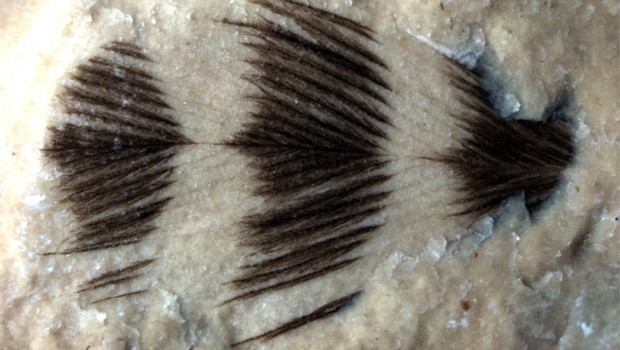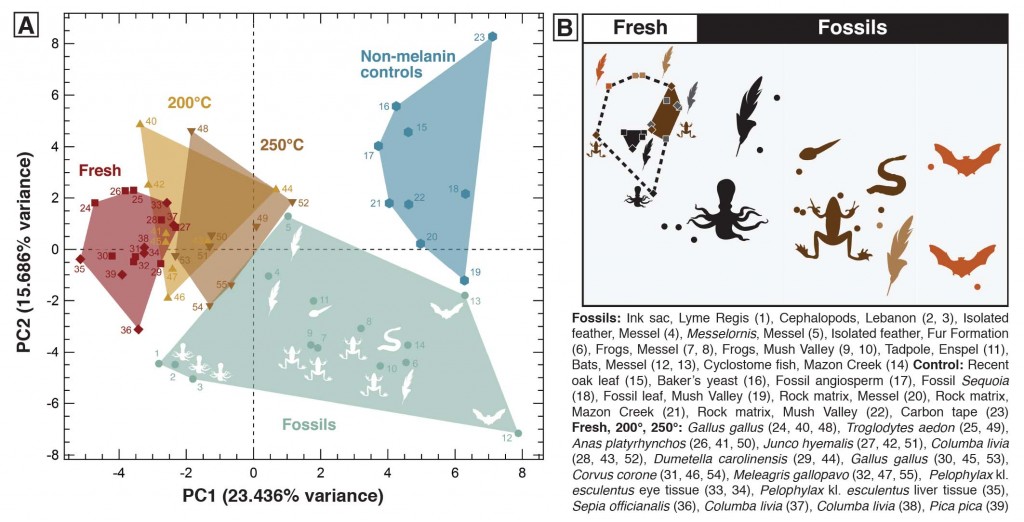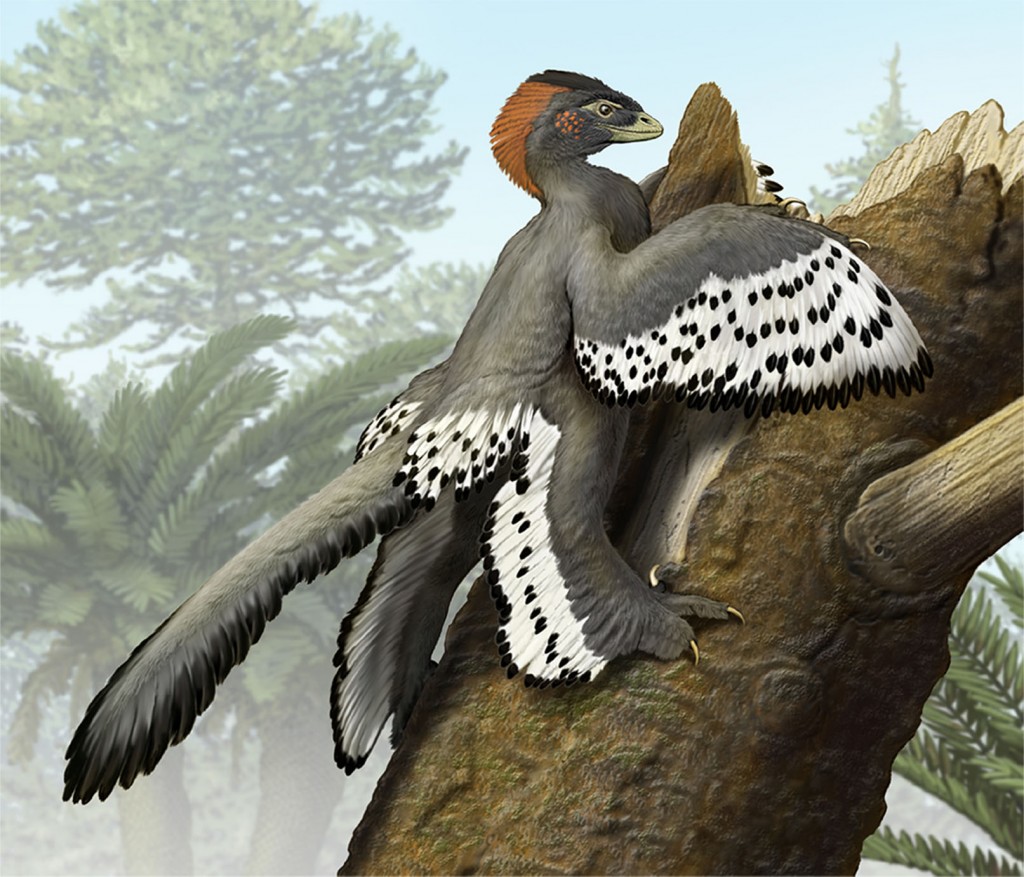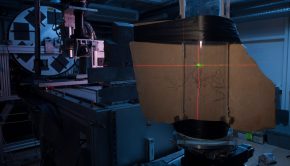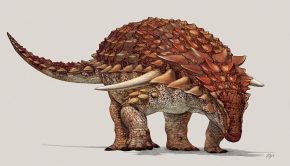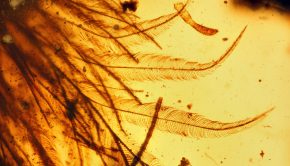Episode 52: Melanin
Melanin is a pigment that is found across the animal kingdom. Melanosomes, the organelles that contain melanin, have been found preserved in fossil feathers and melanosome shape has been used to infer the original colours of birds and dinosaurs. Today we’re talking to Caitlin Colleary whose paper, based on her Masters research at the University of Bristol, delves into detail regarding the structural and chemical preservation of melanin and describes the colour of a fossil mammal for the first time.
Podcast: Download (Duration: 28:05 — 38.6MB)
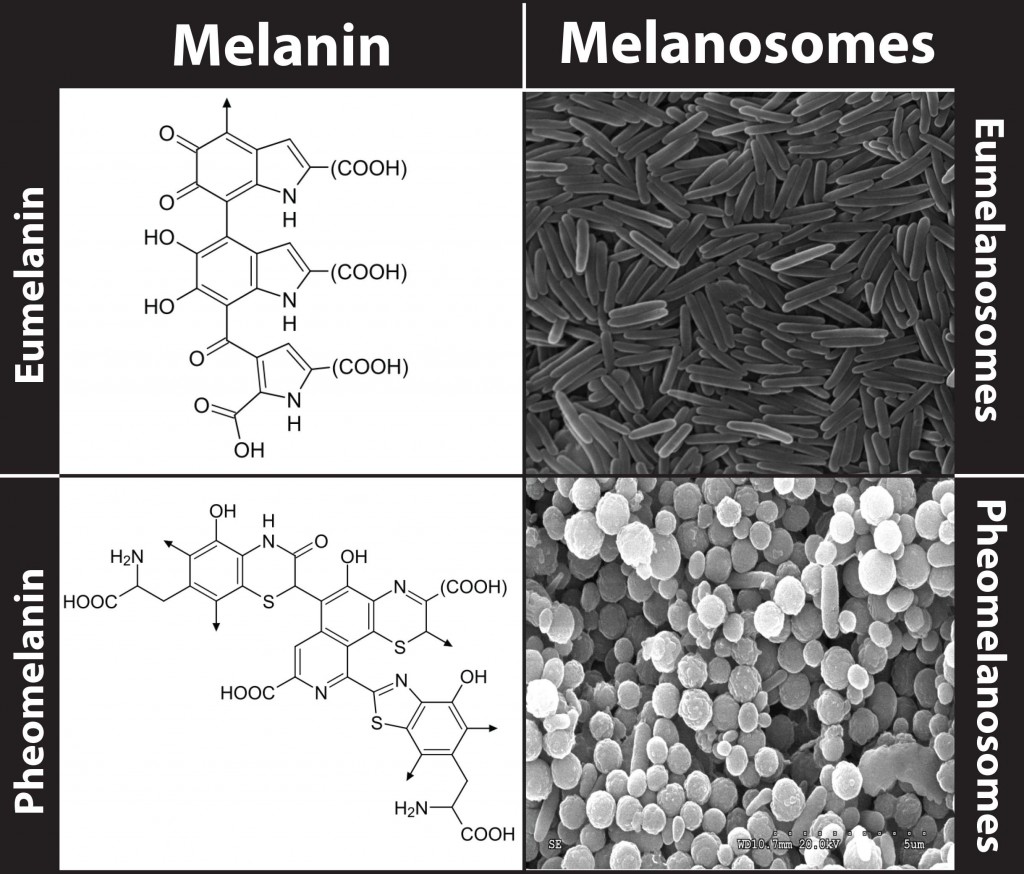
Melanin is a pigment that has a distinct atomic structure. There are two types: eumelanin and pheomelanin. Eumelanin is found in black, dark brown, grey and blonde integuments, while pheomelanin is found in red integuments. Melanosomes are the organelles that contain melanin and there is a correlation between the shape of the melanosome and the type of melanin inside. (Melanin structure images : Roland Mattern – Roland1952. Licensed under Public Domain via Commons).
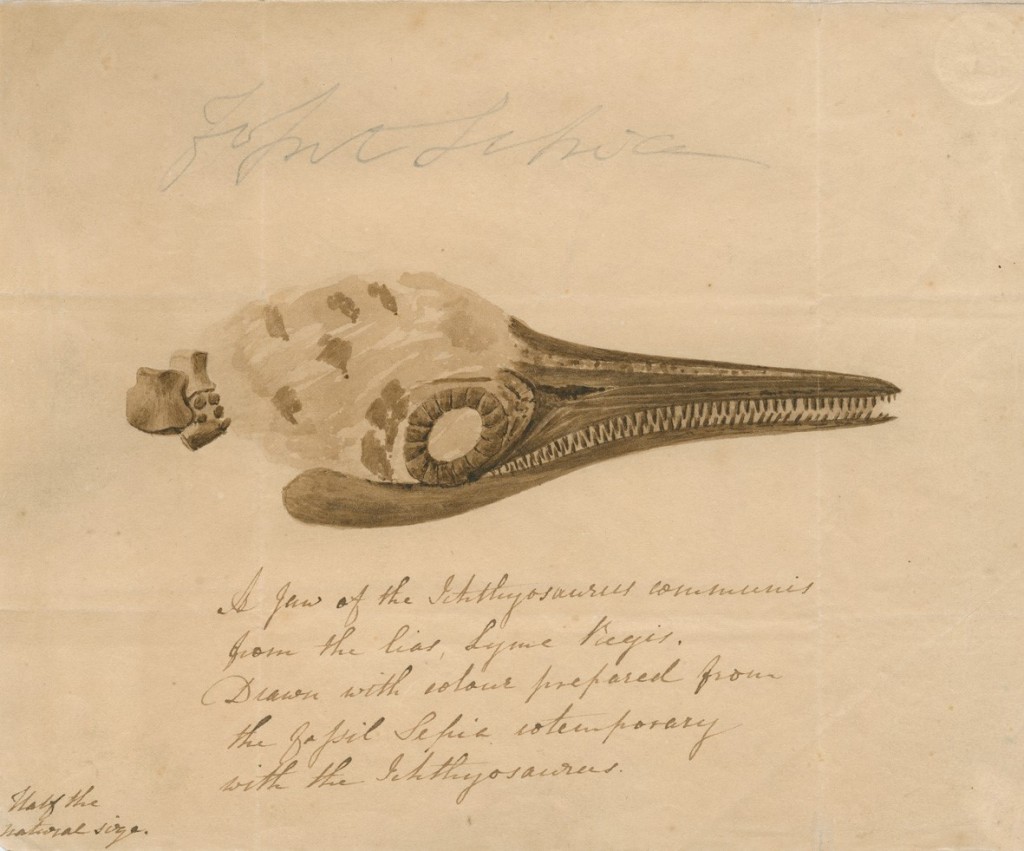
In the Victorian Era, fossil squid ink had been discovered to possess many of the properties of modern ink and was used for this purpose. Here a fossil Ichthyosaur had been sketched using fossil ink.
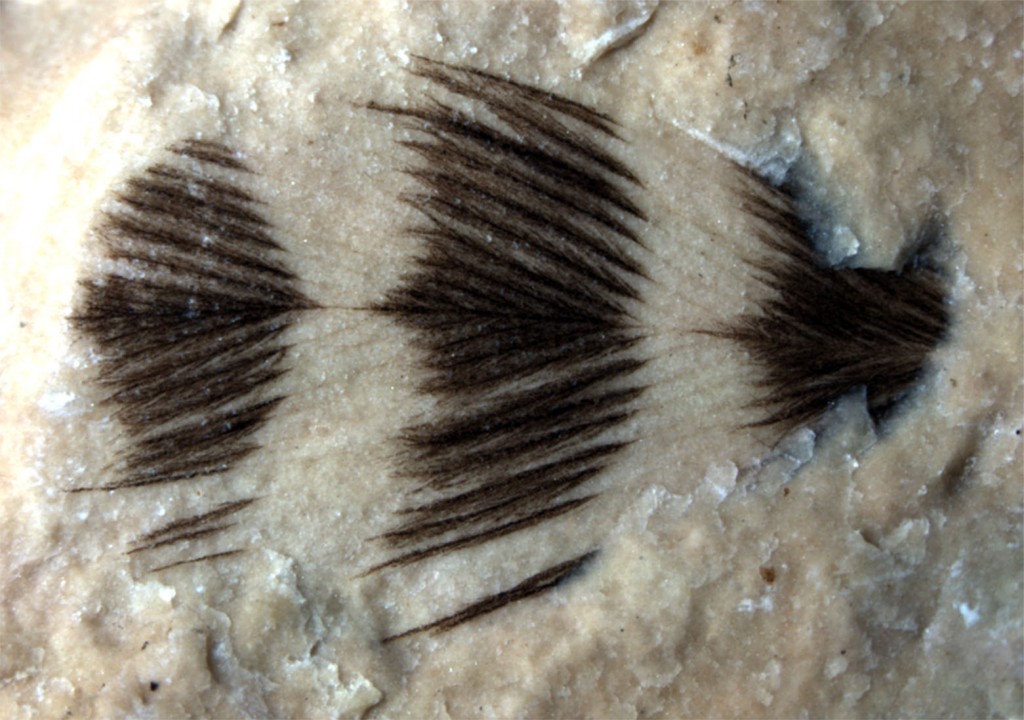
Melanosomes had been observed as long ago as the 1980s, but because of their small size and ‘sausage’ shape, they had presumed to have been bacteria. It took a striped feather for scientists to realise that these ‘bacteria’ were only present on the black bands and not the white, and that they were in fact melanosomes. Image credit: Jakob Vinther.
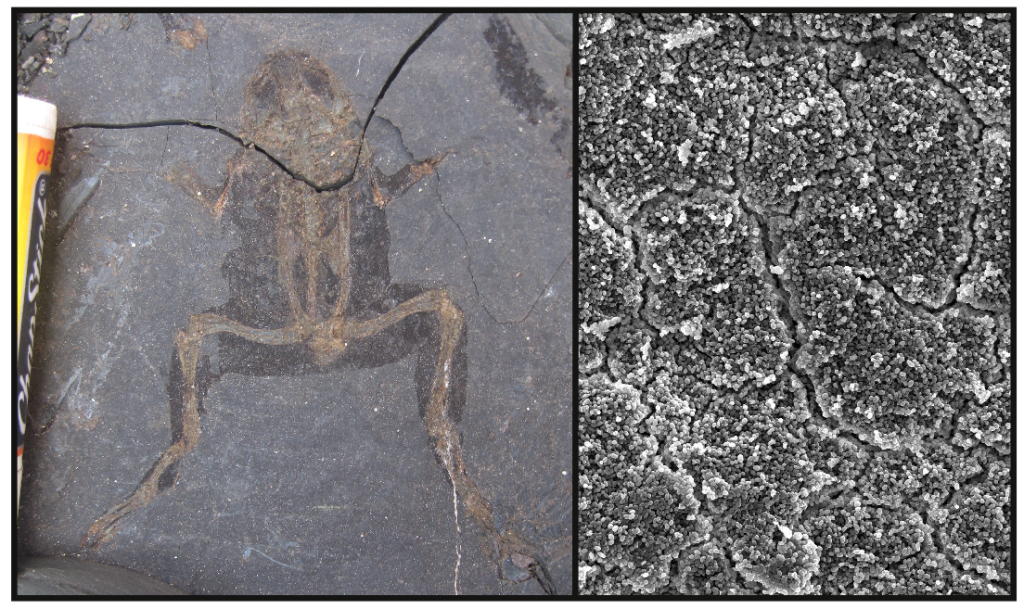
Fossil melanosomes are now known from several exceptionally well-preserved fossils. Miocene frog (left), ~25 million years old and SEM image of melanosomes.

By comparing the melanin and melanosomes in fossil animals to their modern counterparts, using high-tech techniques, Caitlin has been able to comment on the accuracy of using melanosomes to reconstruct fossil colours. Palaeochiropteryx, a fossil bat from Messel, Germany (49 million years old) Photo credit: Jakob Vinther.
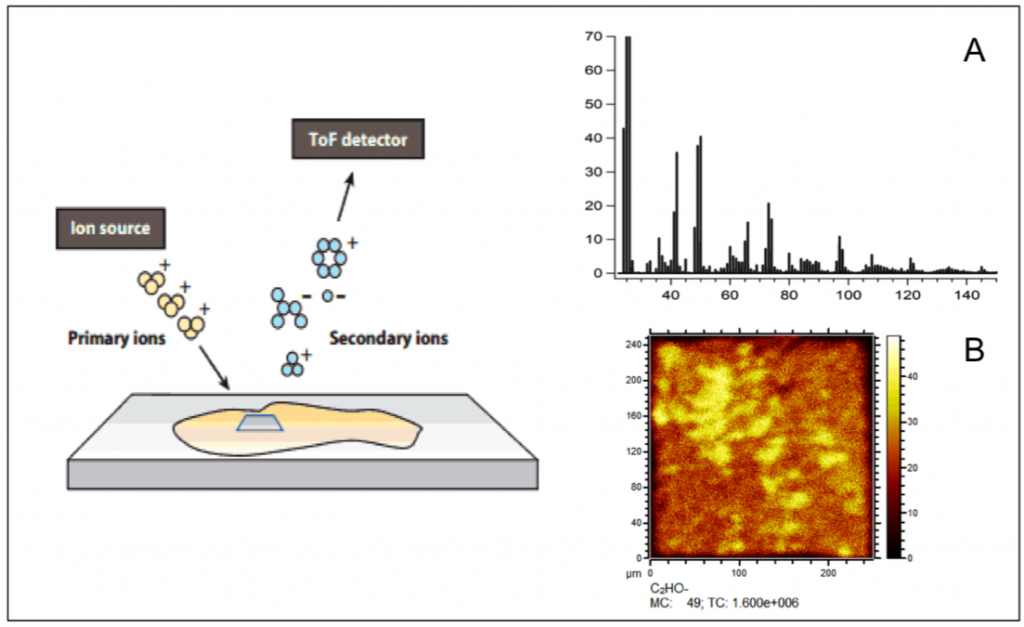
Time-of-flight secondary ion mass spectrometry. The ToF-SIMS bombards the surface of a sample with primary ions and secondary ions are emitted. The data is (A) a mass spectra and (B) images that show ion intensity (Diagram adapted from Thiell and Sjovall 2011).
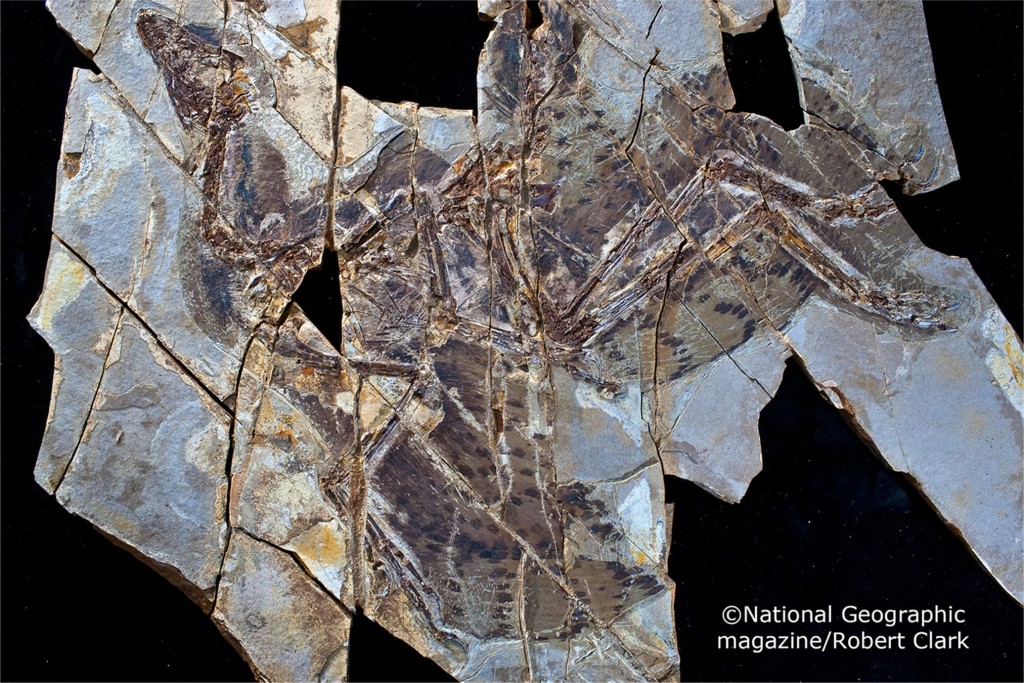
From these results, it is possible to confidently reconstruct the colours of extinct organisms, giving us insights into their palaeoecology. Anchiornis huxleyi. Image credit: Robert Clark.

